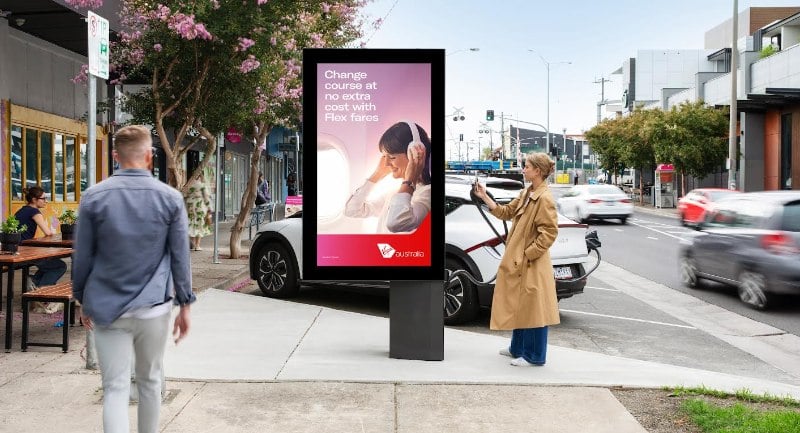JOLT has released a new consumer insights report profiling Australia’s rapidly growing electric vehicle (EV) audience, a demographic the company says is mobile, mindful, tech-savvy and open to brand engagement at street level.
The report, titled Smart, savvy and always-on: meet the audience driving change — and EVs, combines JOLT’s first-party data with broader industry findings to examine how EV adoption is reshaping consumer routines, media habits and expectations of brands. The whitepaper is based on a survey of 1,164 active JOLT users conducted in 2025.
Free, ad-subsidised, EV charging
JOLT’s hybrid model, offering free fast charging subsidised by ad revenue, is proving popular, with many customers rating the value exchange highly. The company’s digital street furniture network delivers large-format, contextually relevant advertising in high-traffic urban locations, bridging utility and brand reach.
According to Randall Taylor, JOLT’s Senior Global Data & Strategy Manager, EV ownership is “much more than transportation — it’s a way of life.” Eighty-one per cent of respondents said driving an EV had changed how they think about sustainability and energy use.
“The spread of progressive customers into mainstream thinking is good news for brands,” Taylor said. “EV drivers are a highly engaged, values-led audience, open to messaging focused on sustainability and the environment, and they are willing to invest in products and services that align with those values.”
Charging as a lifestyle habit
The report also highlights a shift in charging behaviour. Six in 10 JOLT drivers said public charging is now part of their daily routine, often combined with activities like shopping, streaming, or dining. Nearly 70 per cent said they had intentionally visited a business due to its proximity to a JOLT charger, and 80 per cent made a purchase while there.
Carin Lee Skelton, Regional Sales ANZ General Manager, said this creates measurable, high-dwell moments for advertisers: “Drivers are capitalising on charging time to shop, dine and relax, creating an opportunity for brands and retailers to capture attention.”
The report also found that consumers want more fast, visible charging stations near retail and hospitality precincts, a sign that EV infrastructure is increasingly seen as part of smart city planning. Seventy per cent of JOLT drivers said they prefer chargers that are easily accessible, not hidden in car park basements.
“Businesses are enjoying the flow-on from EV charging, both at the register and in the community,” Skelton said. “Smart cities of the future will lean into this.”
With EV adoption accelerating and screen-equipped chargers becoming part of the urban fabric, JOLT believes its network is redefining the out-of-home media category, merging digital presence with physical utility to offer real-world relevance at scale.
